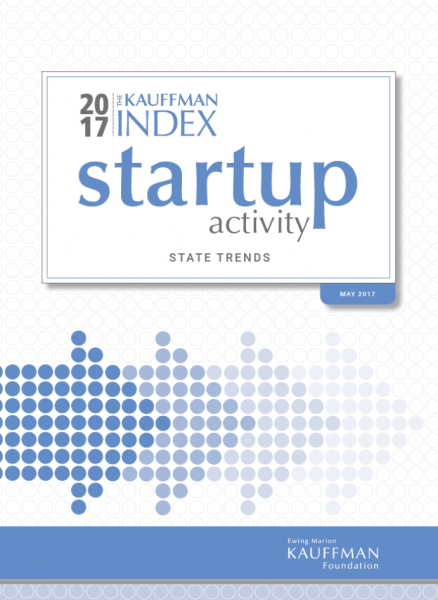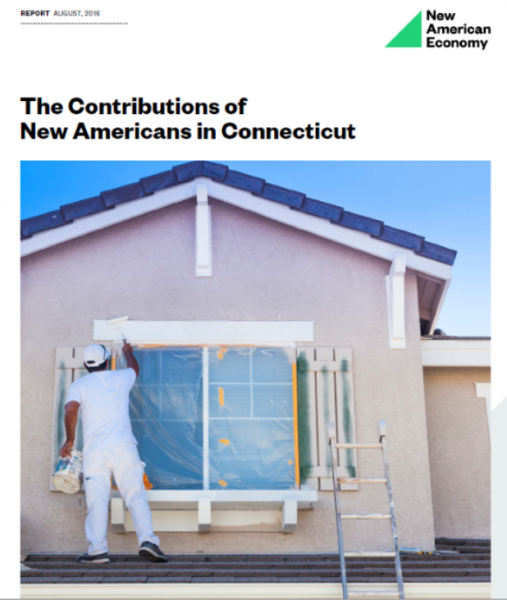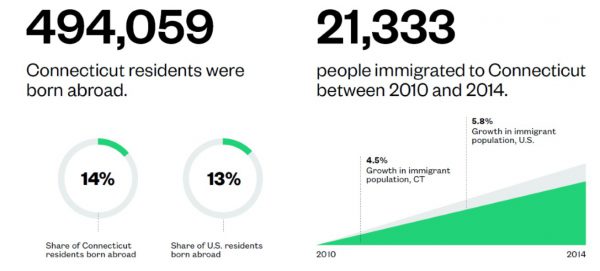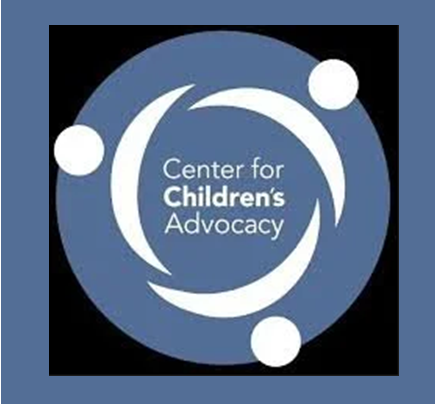Connecticut is among the wealthiest states in the country, and aggregated statewide economic, health, and education indicators suggest that children and families fare better here than in much of the United States. According to a new report developed by the Connecticut Association of Human Services, the reality on the ground is not what it appears to be.
“Race Equity in the Five Connecticuts: A Kids Count Special Report,” found that Blacks’ and Hispanics’ poverty rates are lower in Connecticut than nationally, and Blacks’ median incomes are higher. However, “as we have seen when looking within communities, historic patterns of inequality observed nationally do indeed persist here.”
The report indicates that as is the case nationally, Blacks and Hispanics in Connecticut are “disproportionately impoverished, and have the highest rates of negative outcomes for most of our indicators. Merely being a resident of one of the most affluent states in the U.S. is not a sufficient buffer against the intransigent inequality that affects our children and families along racial and ethnic lines,” the report explains.
"Not all children in our wealthy state are doing well," summed up Jim Horan, Chief Executive Officer of the Connecticut Association of Human Services, in releasing the report at a State Capitol complex conference. "All children, regardless of the color of their skin or their zip code, should have the opportunity to succeed. Connecticut can do much more to provide opportunity for all and address the huge inequities we see today, so that all children will prosper and contribute to and share in Connecticut’s growth," he said in the report's Foreword.
“Five Connecticut’s” refers to a breakdown developed by the Connecticut Data Center based upon each town’s median income, population density, and population below 100% of the poverty threshold (Levy, et al, 2004).
- Wealthy Connecticut towns have “exceptionally high-income, low poverty, and moderate population density.”
- Suburban towns have “above average income, low poverty, and moderate population density.”
- Rural towns are those with “average income, below average poverty, and the lowest population density.”
- Urban Periphery towns are marked by “below average income, average poverty, and high population density.”
- Urban Core towns have “the lowest income, highest poverty, and the highest population density.”
The report used data from communities representing each of the five Connecticuts: Wealthy (New Canaan, W3ilton, Weston, Easton, Fairfield); Urban Periphery (East Hartford and Manchester); Urban core (Hartford); Suburban (Branford, East haven, North Branford, Guilford and Madison); and Rural (Ashford, Brooklyn, Canterbury, Chaplin, Eastford, Hampton, Killingly, Plainfield, Pomfret, Putnam, Scotland, Sterling, Thompson, Woodstock, and Windham).
“Blacks are more segregated in Connecticut than in Arkansas and Hispanics are more segregated than in Texas,” pointed out Orlando Rodriquez, research associate at the UConn Health Disparities Institute, speaking at a forum on the report at the Legislative Office Building, noting that Connecticut is among the nation’s most segregated states.
Demographically, Connecticut, like the nation, is becoming more racially and ethnically diverse. It is estimated that by 2055, America will not have a single racial or ethnic majority. From 2000 to 2015, as the total population grew by 5%, Connecticut’s Black, Hispanic, Asian, and Native American populations combined grew by 42.3%. In 2000, Connecticut’s population was 22.5% Non-White; in 2015, it was 30.8%.
The research also found that “place can correlate somewhat with the degree of the differences observed across these indicators, with outcomes either ameliorated or exacerbated depending on one’s ‘Connecticut’ of residence.”
The general trend, the analysis indicated, “is that White and Asian children and families experience positive outcomes, while their Hispanic and Black counterparts are almost invariably worse off. Even in those areas where Hispanic and Black households have relatively higher median incomes, they often still have worse outcomes than White and Asian households for many non-economic indicators.”
“Place remains tightly intertwined with opportunity, compounding the effects we observe along racial lines,” the report indicated.
“While more affluent suburban towns offer safer neighborhoods and greater social and economic opportunity to residents,67 these neighborhoods and towns tend to have less affordable housing and perhaps less economic opportunity for employees of limited credentials. Finances tie less affluent families to areas of low opportunity, contributing to a cycle of poor outcomes.”
Officials said the report is intended to be the beginning of a “more nuanced and continuous conversation about the role of place in social and economic equity in the State of Connecticut,” to assist in the development of “policies that work earnestly to close the racial and ethnic gaps among our families and children.”
In 2000, Connecticut’s population totaled 3,405,565, with 2,638,845 non-Hispanic Whites, 309,843 Blacks, 320,323 Hispanics, 9,639 Native Americans, and 82,313 Asians. In 2015, the estimated total population was 3,593,222, with 2,478,119 non-Hispanic Whites, 346,206 non-Hispanic Blacks, 526,508 Hispanics, 8,908 Native Americans of any ethnicity, and 149,368 non-Hispanic Asians.
 Rounding out the top 10 are Wisconsin, Iowa, New Hampshire, Louisiana, Rhode Island, Colorado, Nebraska and South Dakota. The states were ranked based on the most gyms using these four categories: total number of gyms, state population in 2016, people per gym, and gyms per capita (100,000 people). Totals were based on the 14 largest gym chains in America. There were more than 36,000 health clubs in the U.S. last year, up from 29,000 a decade ago.
Rounding out the top 10 are Wisconsin, Iowa, New Hampshire, Louisiana, Rhode Island, Colorado, Nebraska and South Dakota. The states were ranked based on the most gyms using these four categories: total number of gyms, state population in 2016, people per gym, and gyms per capita (100,000 people). Totals were based on the 14 largest gym chains in America. There were more than 36,000 health clubs in the U.S. last year, up from 29,000 a decade ago.



 In Connecticut, April 5, 2017, was the Connecticut SAT School Day administration. SAT scores are used by the Connecticut State Department of Education (CSDE) for school and district accountability purposes, state Education Commissioner Diana Wentzell explained in a
In Connecticut, April 5, 2017, was the Connecticut SAT School Day administration. SAT scores are used by the Connecticut State Department of Education (CSDE) for school and district accountability purposes, state Education Commissioner Diana Wentzell explained in a  Hyman found that, prior to the policy, a substantial number of Michigan’s low-income students didn’t take the ACT even though they would have scored at or above the standard for college readiness. That might been due to financial or logistical barriers, like the cost of the test (between $30 and $50) or difficulties traveling to an exam center on a Saturday. (Both the SAT and ACT offer fee waivers to low-income students, but the study notes that the waivers are underused.)
Hyman found that, prior to the policy, a substantial number of Michigan’s low-income students didn’t take the ACT even though they would have scored at or above the standard for college readiness. That might been due to financial or logistical barriers, like the cost of the test (between $30 and $50) or difficulties traveling to an exam center on a Saturday. (Both the SAT and ACT offer fee waivers to low-income students, but the study notes that the waivers are underused.) ted Nations and vetted by the State Department in a process that takes at least 18 months. By comparison, a million or so legal immigrants arrive annually. From October 2001 through 2016, Burma, Iraq, Somalia, Bhutan, and Iran are the top five nations that send refugees to the U.S.
ted Nations and vetted by the State Department in a process that takes at least 18 months. By comparison, a million or so legal immigrants arrive annually. From October 2001 through 2016, Burma, Iraq, Somalia, Bhutan, and Iran are the top five nations that send refugees to the U.S.
 There were nine states that had less than 500 refugees from a single country since October 2001: Alabama, Alaska, Arkansas, Delaware, Hawaii, Mississippi, Montana West Virginia and Wyoming.
There were nine states that had less than 500 refugees from a single country since October 2001: Alabama, Alaska, Arkansas, Delaware, Hawaii, Mississippi, Montana West Virginia and Wyoming. International migration has helped, the data shows, but not enough to offset domestic out-migration. Average international in-migration has grown 29% post-recession compared to pre-recession, but in terms of overall net migration, the state has seen an increased loss starting from 2012.
International migration has helped, the data shows, but not enough to offset domestic out-migration. Average international in-migration has grown 29% post-recession compared to pre-recession, but in terms of overall net migration, the state has seen an increased loss starting from 2012.













 Nearly two-thirds of those surveyed in Connecticut (64%) called for “using technology to enhance the way students learn in the classroom” – the highest percentage among the six New England states. A majority called for “more significant efforts to close achievement gaps” (59%), more effective teachers (62%) and changes to the ways schools are funded (57%). The state legislature in Connecticut is currently considering changes in the school funding formula proposed by Gov. Malloy in the wake of a state court decision.
Nearly two-thirds of those surveyed in Connecticut (64%) called for “using technology to enhance the way students learn in the classroom” – the highest percentage among the six New England states. A majority called for “more significant efforts to close achievement gaps” (59%), more effective teachers (62%) and changes to the ways schools are funded (57%). The state legislature in Connecticut is currently considering changes in the school funding formula proposed by Gov. Malloy in the wake of a state court decision.



























